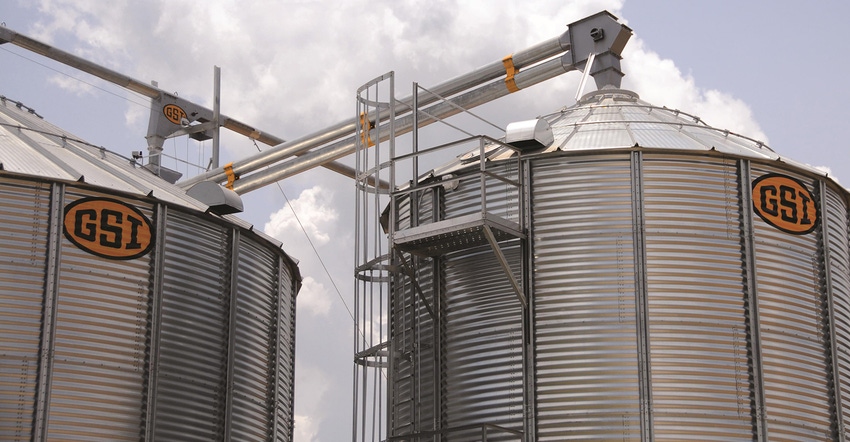August 28, 2017

Editor's Note: You can watch the FlexWave in action in a special time-lapse video from GSI at the end of this story.
Just over two years ago an inventor came to GSI with an idea. Why not do what the sugar industry does to clean out bin bottoms? The innovation is to use air to fill liners that push material into unloading augers. It had never been tried in a grain bin — but when the company tested out the idea, it worked.
And in the past two years, GSI has been at work creating what it will introduce at the Farm Progress Show this week — the FlexWave system. "The technology is 25 or 30 years old," said Greg Trame, GSI director of engineering. He talked to Farm Progress about the new system ahead of the show.
Trame joked that the inventor had taken his idea to several people, and GSI was the first company that didn't laugh at the concept. "We've been working to refine it to get where we have a product we could sell," Trame said. "There were issues and challenges to deal with, but we've been knocking down those hurdles."
The company is demonstrating the tech at the show and will conduct field tests this fall with the aim of marketing in 2018. So how does it work?
In a bin, the final cleanout usually involves a bin sweep, or auger, along with the need to manually shovel the grain out. With FlexWave that goes away. Essentially, the system is a two-piece liner that is attached to the bin and rests on the floor. When the grain level gets down low enough that the bottom auger is getting no grain, one side will inflate and essentially collapse the grain pile into the center trough. Once one side is completely emptied, the opposite side liner inflates and repeats the process for grain on that side of the bin.

THE PROCESS: Using air power and two inflatable bags, the new Flex Wave System from GSI claims a 99% cleanout of bin bottoms with no added manual cleanup. The two-part system inflates on each side when grain levels are too low for the bin to empty efficiently. Each inflation pushes grain toward the unloading auger. (Source: Agco)

GSI claims the system will remove more than 99% of the grain in a bin, with no need for farmers or hired hands to climb into hot, dusty bins to do the final cleaning. And this also avoids the safety concern of being in a bin with an active sweep auger at work.
Less pressure than you think
To inflate that liner, many might think it takes plenty of pressure. "The crazy thing about the whole system is that you think you need a ton of air pressure, but we inflate that liner using less than 1 psi of pressure," Trame said.
As that liner fills, even with low pressure the unit can move up to 100 tons of grain. "We're not pushing the pile, we're collapsing the grain with the liner into the auger," Trame added.
The liner is constructed using commercial-grade material, a PVC-coated product designed to last more than 30 years under normal conditions. "We get questions from farmers about mice," Trame said. "With this system, we're operating at such a low pressure that if a hole develops, we can patch it easily."
As for mice, there are a couple factors about this system that should deter trouble. First, the grain bin needs to be better sealed for the air-pressure system to work, which will help keep mice out of the bin. And second, the material itself is a coated product that should be less desirable to mice.
He added that the FlexWave is another unload option from GSI, and it can be used with any standard current unload system. The tech is exclusive to GSI. Any equipment that relies on a hopper cone for gravity flow would benefit from this technology, too.
As for the field trial, the aim is to answer some questions beyond company testing. "We're going to look at how aeration works with the liner in the floor of the bin," Trame said. "And we want to make sure it's working in different conditions."
You can learn more about the system and watch an online video by visiting grainsystems.com/flexwave.
About the Author(s)
You May Also Like






